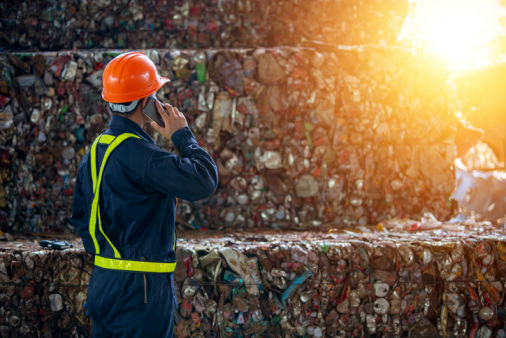AXA XL considers the risks of non-owned disposal sites

Authored by AXA XL Senior Environmental Risk Consultant Diku Da
You work for a manufacturer that generates nonhazardous industrial waste. For years, you’ve been using the same non-owned disposal site (NODS) to store petroleum-impacted solid wastes to the tune of about 250 barrels per month. Your company prides itself on properly labeling and manifesting your waste containers. You do everything to the letter of the law. Your manufacturing operations change, and you stop using that NODS.
One day, years later, you receive an official-looking letter from the Environmental Protection Agency (EPA). You open it, hoping for a routine inspection notice. Instead, it’s a letter naming you as a potentially responsible party (PRP) because, unbeknownst to you, the NODS owner declared bankruptcy and abandoned the site. And guess what? It released pollutants into a nearby waterway and the site wound up on the EPA’s Superfund list.
The long and the short of it is this: you and every other user of that NODS is now on the hook for the remediation and cleanup.
Wait. What?
That’s right. Under U.S. law, there’s a thing known as the Resource Conservation and Recovery Act (RCRA). One thing it does is to establish “cradle-to-grave” responsibility for waste generators (like your company) and that includes “joint and several liability.” What does that mean? It means you and every other waste generator that used the NODS in question are now collectively liable for the cleanup costs. Costs of this kind of cleanup can easily run into the millions of dollars PER potentially responsible party.
Here’s the kicker: It doesn’t necessarily matter if you contributed a lot or a little to the amount of material deposited in the NODS. And, if any of the other waste generators have gone out of business, you and the other remaining PRPs can be asked to make up the difference.
Ouch.
Of course, if you’ve done the risk management and secured the right kind of insurance, like AXA XL’s Pollution and Remediation Legal Liability (PARLL) policy, you may have NODS coverage to indemnify you in a situation like that. Of course, risk avoidance is the best way to minimize financial losses.
But what are the odds, really?
Not as much in your favor as you might think. There are thousands of examples of waste generators being identified as PRPs by the US EPA or even state regulatory agencies. Plus, liability can extend to other types of facilities, including: municipal waste landfills, construction & demolition landfills, waste incinerators, wastewater treatment facilities, oil recyclers, drum reconditioners, electronic waste sites, and other recycling facilities.
Let’s say the NODS didn’t declare bankruptcy. If they had a violation or were fined, that could trigger an investigation of the waste generators using that site. In which case, the regulators would be looking into your company’s practices, including the waste haulers you contract with, your internal processes for waste shipment and more.
They may also want you to demonstrate your due diligence when selecting waste contractors.
Do your homework
Due diligence must begin during the NODS selection process. But it can’t stop there. You need to update it periodically thereafter. Using an audit form or database can help you keep your due diligence efforts organized and consistent. You should also create a formal NODS Due Diligence Program to provide context on how this information will be used. For example, policies should:
- outline the approval process for a new waste vendor
- define what constitutes acceptable or nonacceptable audit findings
- define any special conditions under which NODS can be used (i.e., only certain waste streams)
- determine how you plan to establish and maintain both a non-approved and approved contractor list
- describe when and how you will follow-up on audits/due diligence, maintain audit records, contracts, insurance certificates and related NODS documentation
- define who is responsible for the above activities (corporate staff, plant managers, etc.)
The AXA XL Environmental Team has created a template to help you start performing your NODS due diligence. For a copy of the template and to learn more about protecting your organization from risks like this, download AXA XL’s white paper Non-owned disposal site due diligence, selection and auditing.
About AXA XL
AXA XL is the P&C and specialty risk division of AXA which provides property, casualty, professional and speciality products to industrial, commercial and professional firms, insurance companies and other enterprises, here in the UK and throughout the world. With underwriting teams based in the US, UK, EMEA and Asia Pacific regions, we can make decisions close to the markets you serve and work with you to tailor cover to your business needs.
We help businesses adapt and thrive amidst change. Rather than just paying covered claims when things go wrong, we go beyond protection into prevention so your business can go beyond the unexpected.

